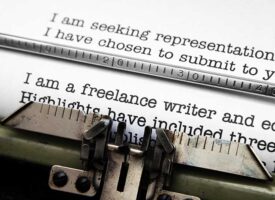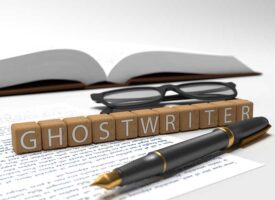As editors become increasingly swamped with inappropriate manuscripts, more and more publications are closing their doors to unsolicited submissions. This means that the query letter is fast becoming the only way to break into some of the best markets.
The Value of a Query
Queries benefit both editors and writers. Editors much prefer to review a one-page letter than a 10-page manuscript, so queries spend less time in the slush pile. They also enable an editor to determine, quickly, whether you:
- Can write effectively
- Have a coherent, well-thought-out idea that fits the publication’s content
- Have a basic grasp of grammar and spelling
- Have read the publication
- Have the credentials or expertise to write the article
- Are professional in your approach to writing
Queries save YOU time by ensuring that you don’t invest time and energy into writing an article that won’t be accepted. Keep in mind that articles are often rejected for reasons that have nothing to do with quality. An editor may already have a similar piece on file, or assigned, or have covered something similar in a recent issue. It’s much easier to find this out through a query, than to tailor an article for a publication and then have to rewrite it and send it somewhere else. It’s also easier to obtain interviews when you can say you have a solid assignment.
By querying first, you also give the editor a chance to provide feedback on your idea. The editor may want to suggest a particular length, or approach, or recommend experts to interview. S/he may want you to cover other aspects of your subject in sidebars. By finding out what the editor wants before you start writing, you’ll avoid having to revise the piece later.
A well-written query can also result in assignments you didn’t expect. If the editor is impressed by your style and credentials, s/he may offer you some other assignment, even if your original idea isn’t usable. This can often be the beginning of a long, rewarding relationship!
Query Letter Essentials
But how do you “sell” an editor on your article when you have no more than a page to explain your concept and display your writing skill? The answer is: By including everything the editor needs to know about your article — and about you. A successful query letter generally includes these five basic components:
- The hook
- The pitch
- The body
- The credentials
- The close
The Hook
Your very first line should grab an editor’s attention. It must demonstrate that you can write effectively, and that you understand your market.
There are several ways to approach the “hook,” including:
- The problem/solution hook. This defines a problem or situation common to the publication’s audience, then proposes an article that can help solve that problem. Here’s an example:The pet magazine market is an ideal place for newer writers to “break in”. However, it is constantly flooded with inappropriate submissions. To break in, one must understand what these magazines want, and what they won’t accept. (“Writing for Pet Magazines,” sold to Byline.)
- The Informative Hook. This usually presents two or three lines of useful information (e.g., facts, statistics), followed by an explanation of how this applies to the target audience. For example:Thanks to a translation glitch, Microsoft was forced to pull its entire Chinese edition of Windows 95 from the marketplace. Microsoft recovered — but that’s the sort of mistake few small businesses can afford! (“How to Localize Your Website,” sold to Entrepreneur’s Home Office — see Sample.)
- The Question. Often, this is a problem/solution or informative hook posed as a question, such as:Did you know…?
What would you do if…?
Have
you ever wondered…? - The personal experience/anecdote. Many writers like
to take a personal approach, as it immediately establishes the credential of
“experience.” Be sure, however, that your market uses more personal articles,
or first-person accounts, before attempting a hook like this:Forget-me-nots. I love their wistful name. I love their
tiny blue flowers. And yes, I love that growing them is as simple as pie.
(“Forget-me-nots: Simply Unforgettable Spring Flowers,” by Mary R., sold to
Fine Gardening.) - The attention-grabber. The goal of this type of
hook is to make the reader sit up and take notice — hopefully long enough to
read the rest of the story. This might be a good “hook” for a query about
parachuting in Yosemite:As I fell from the top of Yosemite’s El Capitan, I
wondered if my life would truly flash before my eyes — or if I would stop
screaming long enough to notice.
Hooks to Avoid
Certain hooks scream “amateur” and are guaranteed to speed a
query to the rejection pile, including:
- The personal introduction. Never start with a line
like “Hi, my name is John, and I’d like to send you an article about…” Don’t
offer irrelevant information, such as “I’m a housewife and mother of three
lovely children. Recently I decided to pursue my lifelong dream of
writing…” - The “suck-up” hook. Yes, editors want to know that
you’ve read their publication, but they also want you to prove it by offering
an appropriate query — NOT by saying, “I’ve been a subscriber for 20 years and
just LOVE your magazine…” - The “bid for sympathy”. Don’t tell an editor that
you’ve never been published before, or that you need to sell this piece or your
children will starve. - The “I’m perfect for you” hook. Never sing your own
praises: “I am a highly experienced professional and will be an asset to your
magazine”. Don’t inform the editor that your article is “perfect” for his
readers. Never declare that your article is “wonderful” or “fascinating.” Prove
it — with a good query. - The “I’m an amateur” hook. Never announce that you
have never been published before, or that you’ve tried to sell the same article
to 20 other magazines, or that your writing teacher (or mother or spouse)
suggested that you send this to a magazine. Even if you haven’t sold anything
before, you can still ACT like a professional.
The Pitch
Once you have an editor’s attention, move on to the pitch.
Usually, this is your second paragraph, and its purpose is to explain exactly
what you’re offering. For example, the pitch that followed the “localization”
hook, above, went like this:
I’d like to offer you a 1,500-word article titled
“Internationalizing Your Online Market.” The article would discuss how small
businesses can take advantage of “localizing” agents to tailor their products
and market strategies to the international marketplace.” (“How to Localize Your
Website.”)
If possible, your pitch should include a working title for
your article (titles help editors “visualize” what you’re proposing), a
word-count (make sure you’ve checked the publication’s guidelines!), and a
brief summary of what the article will cover.
The Body
This is where you really start to “sell.” The body of your
query will usually be from two to four paragraphs, and presents the details of
your article. Remember that an editor wants to know exactly what the article
will cover, so by this time you should have a working outline of the piece in
your own mind.
A good way to present an overview of your topic is to break
it into logical subtopics — e.g., the sections that would be likely to appear
under subheads in the finished piece. The longer the article, the more
subtopics you can include (though it’s usually not advisable to have more than
four or five). For example, a 700-word article on cancer in pets might only
cover “The ten warning signs of cancer,” while a 2000-word article on the same
topic might cover “common types of cancer, warning signs, and current treatment
options.” A good way to determine whether you have the right number of
subtopics is to divide your word-count by the number of topics — e.g., a 2,000
word article with five subtopics gives you a budget of 400 words per topic.
Here’s how I described the content of an article on quilt
care:
The article covers techniques of hand-cleaning delicate
quilts to avoid damaging fragile fabrics and prevent fading and staining. It
discusses ways to remove spot stains (including blood spots and rust stains
from needles and other metal contact). It also discusses ways to mend damaged
quilts without destroying the integrity of an heirloom piece. Finally, it
discusses the best ways to store or display quilts in order to preserve and
protect them. (“Caring for Heirloom Quilts,” sold to DownUnder
Quilts.)
Some writers like to use block paragraphs; others like to use
bullets. There’s no rule on the best style; choose a style that makes your
query visually appealing and easy to read.
The Credentials
Editors want to know why you are the best person to write the
article you’ve proposed. This is where your credentials come in. Don’t assume,
however, that these must include writing credits. While a list of previous
articles on relevant topics is nice, you may also be able to prove your
qualifications with credentials such as:
- Professional experience (some publications accept material
ONLY from qualified experts) - Academic degrees or training
- Teaching experience in the subject area
- Personal experience (especially if the article relates to
personal issues/problems) - Writing experience
- Interviews with experts (a way to demonstrate that even if
you don’t have the credentials, you’ll be able to get information from those
who DO)
Credentials are usually listed in the last or next-to-last
paragraph. Here’s an example:
As webmaster of www.musicphotographer.com, it has been my
job to connect music writers and photographers with the markets that need their
work. This is the only site devoted to music journalism on the Web. I’m also
writing the first guide on the topic. Reviews for my last book, The Van Halen
Encyclopedia, are available at Amazon.com. (C. Chilver’s successful pitch to
Inkspot for “How to Write for the Music Market.”)
The Close
Use the final paragraph of your article to thank the editor
for reviewing your proposal — and to offer one last “nudge” to encourage the
editor to respond. I usually include a time-estimate in this paragraph — e.g.,
“If you are interested in this article, I can have it on your desk within XX
days.” Here’s a typical closing paragraph:
I hope this topic interests you, and look forward to your
response. If you would like to see the article, I can have it on your desk
within two weeks of receiving your go-ahead. Thank you for your time!
Format
The presentation of your letter can be as important as your
content. A traditional (paper) query should include the following elements:
- A decent letterhead. At the very least, your name
and address and other contact information should be printed at the top of your
letter (NOT at the bottom or under your signature) in an attractive font. You
can have an inexpensive letterhead designed and typeset at your local printing
shop, or online through iPrint.com. Or, design your own on your
computer. - A business-style body. If you aren’t familiar with
terms like “block” or “modified block,” see
Sample. Always include a blank line between paragraphs, and
don’t indent more than five spaces (if at all). - A formal salutation. Don’t address the editor by
first name unless you know him/her personally. - Clean, proofread copy. Don’t rely on your
spellchecker; review your query yourself before mailing it out. - Quality paper. Use at least 20-lb. bond paper for
queries. Some writers like to use fancier papers — parchment, linen, etc. —
on the theory that a nicer paper with a professional tint will stand out amidst
all the white paper on an editor’s desk. Don’t go to “colors” however — pink
paper and blue type scream for rejection. - A SASE (self-addressed stamped envelope). Don’t use
“insert” envelopes; fold a full-size business envelope (#10) in thirds and use
that. Be sure it has adequate postage. If you are submitting a query from
another country, be sure that your SASE has the correct postage for the target
country — or else include an appropriate number if IRCs (international reply
coupons).
These guidelines are for traditional “paper” queries. Needless
to say, not all of these “rules” are possible when sending an e-mail query; for
more details on e-mail queries, see
Preparing E-mail Queries.
Clips
Many editors ask for clips so that they can review a sample
of your writing style. Clips are simply copies of previously published
materials. Never send copies of unpublished works! Don’t send clips of work
you’ve self-published or posted on your own website. And remember, bad clips
are worse than no clips at all.
It’s best to send clips that are relevant to the proposal, if
you have them. If you don’t, send samples from your most prestigious
publications. If most of your published works are electronic, print out copies
from your website; don’t just ask the editor to “visit” unless you are sending
an e-mail query.
If you have no clips, don’t despair. Most editors consider
the merits of a query first and the clips second. (To be honest, many editors
don’t even have time to read clips, even though they request them.) If your
query is strong enough, the absence of clips shouldn’t be enough to trigger a
rejection, unless the publication works ONLY with published writers.
Following Up
How long should you wait for a response? Usually, you should
wait at least as long as the publication’s guidelines suggest (e.g., 4 to 6
weeks) — and then add another two weeks “grace period.” Then, send a polite
follow-up. Attach a copy of your original query, so that the editor won’t have
to search the files for it. If you still hear nothing after another 3-4 weeks,
consider a polite phone call. (No, it won’t cause your article to be rejected.)
If you STILL can’t get an answer, and you would like to withdraw the query,
send a final letter informing the editor that, as you have received no
response, you are officially withdrawing the query from consideration. This
protects you from charges of “simultaneous submissions” if the first editor
finally decides to reply after you’ve already sent the query on to someone
else.
The ability to write a good query is one of the most
important skills in a writer’s toolbox. A good query shows an editor that you
can write and that you are a professional — qualities that may result in an
assignment even if the editor can’t use your original proposal. Think of your
query as a letter of introduction, your first and only opportunity to get your
foot through that particular door. If you make a good impression, you’re likely
to be invited back (even if your original pitch is rejected). If you make a bad
impression, you may find that door forever closed.
Copyright © 2001 Moira Allen / Reprinted with permission. Excerpted from
The Writer’s Guide
to Queries, Pitches and Proposals.
ABOUT THE AUTHOR Moira Allen is the editor of Writing-World.com (http://www.writing-world.com) and the author of more than 300 published articles. Her books on writing include Starting Your Career as a a Freelance Writer and The Writer’s Guide to Queries, Pitches and Proposals.



